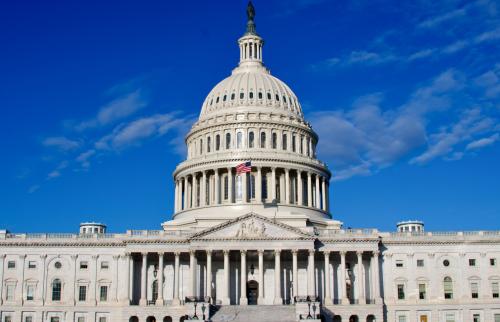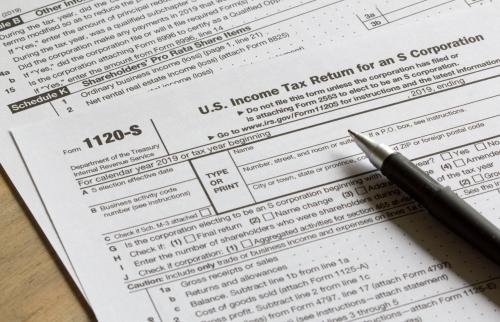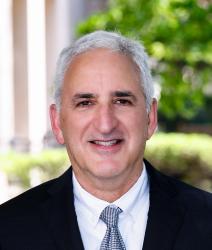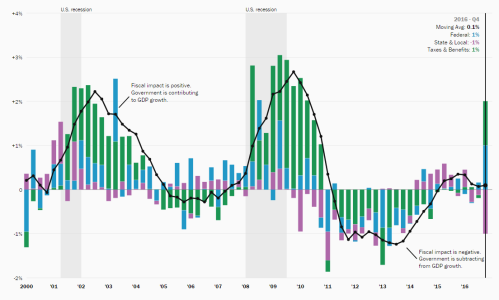With the passage of the One Big Beautiful Bill Act, federal debt is now on course to rise inexorably and unsustainably over the next several decades in the absence of policy changes. Sooner or later, policymakers will need to balance revenue and spending. Given public reluctance to cutting major programs like Social Security or Medicare, they may need to consider increasing revenue.
Although tax increases are often unpopular, two strategies could help legislators make the case: earmarking taxes for specific programs and, more generally, reframing the tax discussion to focus on the popular services that taxes fund.
Earmarked taxes reveal tradeoffs, boosting government transparency and accountability
Revenue from an earmarked tax is allocated to a particular use and not deposited into the federal government’s general fund. Social Security and Medicare payroll tax revenues, for example, go into their respective trust funds. Revenues from federal unemployment insurance taxes and gasoline taxes support spending on unemployment benefits and transportation projects, respectively.
Most states and several other countries also use earmarked taxes. For example, in California, windfall capital gains tax revenues are earmarked for K-12 schools and community colleges across the state.
In the Philippines, incremental alcohol and tobacco tax revenues finance health care spending. This earmark has resulted in a large increase in health-related revenue (tripling between 2012 and 2016), greater health insurance coverage, and lower tobacco consumption.
By showing voters where tax dollars go, earmarks can bolster support for new revenue raisers, strengthening popular programs and increasing the transparency and accountability of government spending. And voters can explicitly consider budgeting tradeoffs when a tax is directly linked to specific spending. For example, even if tax cuts are popular in the abstract, one study found that voters consistently prefer that the government spend excess revenue on programs like Social Security and Medicare instead. This could be why taxes supporting these programs—broadly understood to fund popular benefits—have largely escaped major tax cuts over the last several decades. A similar dynamic played out in Kansas, where a 2012 package of tax cuts quickly led to ballooning budget shortfalls and widespread spending cuts. Within a few years, however, the Republican legislature reversed these changes in the face of public backlash. When forced to pick between raising taxes or cutting spending, they raised taxes.
But earmarks are not a perfect solution. They can constrain a government’s future spending choices if public preferences shift. Economic theory and evidence also suggest that just because money is earmarked for a specific purpose doesn’t mean more money will be spent for that purpose. Lawmakers can replace existing general fund dollars with earmarked revenue—redirecting the original money elsewhere.
Reframing a tax can improve voters’ understanding of its purpose and value
Earmarks are just one way that legislators can help voters understand the choices around taxation and spending. More broadly, politicians frequently choose language to frame an issue, such as calling the estate tax a death tax—a label that was a strategic move to build support for its reduction—even though just 0.1% of decedents paid any estate taxes in 2021.
Framing can also help the public see how taxes support popular government services and benefits and thus promote more sustainable fiscal practices. For example, the payroll tax that finances Social Security is called a “contribution,” (the Federal Insurance Contributions Act, or FICA), reinforcing the fact that workers pay into a retirement and disability insurance system that will eventually benefit them.
Likewise, South Africa frames its sugar tax as a “Health Promotion Levy.” Implemented in April 2018, it aimed to reduce the consumption of sugary drinks, obesity and related non-communicable diseases. By naming it a “Health Promotion Levy” and not a “Sugar Tax,” authorities emphasized to taxpayers that the tax supports public health objectives and is not simply a penalty, thereby increasing public acceptance by connecting the tax with broader societal goals.
Policymakers could frame earmarked taxes to reduce federal deficits and the debt
In the U.S., the federal government could reduce deficits and debt by implementing new earmarked taxes framed to showcase their intended benefits, such as a federal Value-Added Tax (VAT) earmarked for existing health care expenditures or a carbon tax earmarked in part for climate change initiatives. These strategies not only raise new revenue but also highlight how funds directly support social priorities, helping to frame taxation as a necessary investment rather than a burden. By strengthening the connection between taxes and services, lawmakers can strengthen federal fiscal sustainability.
The Brookings Institution is committed to quality, independence, and impact.
We are supported by a diverse array of funders. In line with our values and policies, each Brookings publication represents the sole views of its author(s).







Commentary
Could earmarking taxes help reduce the federal deficit?
July 31, 2025